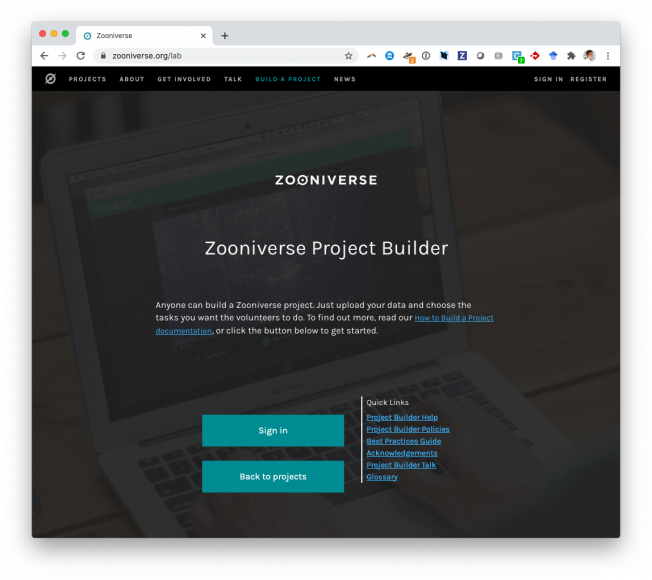The History and Environment of a Faded Quasar: Hubble Space Telescope observations of Hanny's Voorwerp and IC 2497
ArXiv 1206.3797 (2012)
Abstract:
We present Hubble Space Telescope imaging and spectroscopy for the extended high-ionization cloud known as Hanny's Voorwerp, near the spiral galaxy IC 2497. WFC3 images show complex dust absorption near the nucleus of IC 2497. STIS spectra show a type 2 Seyfert AGN of rather low luminosity. The ionization parameter log U = -3.5 is in accord with its weak X-ray emission. We find no high-ionization gas near the nucleus, adding to evidence that the AGN is currently at low radiative output (perhaps now dominated by kinetic energy). The nucleus is accompanied by an expanding ring of ionized gas 500 pc in projected diameter on the side opposite Hanny's Voorwerp, with Doppler offset 300 km/s from the nucleus (kinematic age < 7 x10^5 years). [O III] and H-alpha + [N II] images show fine structure in Hanny's Voorwerp, with limb-brightened sections and small areas where H-alpha is strong. We identify these as regions ionized by recent star formation, in contrast to the AGN ionization of the entire cloud. These candidate "normal" H II regions contain blue continuum objects, whose colors are consistent with young stellar populations; they appear only in a 2-kpc region toward IC 2497 in projection. The ionization-sensitive ratio [O III]/H-alpha shows no discernible pattern near the prominent "hole" in the ionized gas. The independence of ionization and surface brightness suggests that substantial spatial structure remains unresolved, to such an extent that the surface brightness sample the number of denser filaments rather than the characteristic density in emission regions. These results fit with our picture of an ionization echo from an AGN whose ionizing luminosity has dropped by a factor > 100 (and possibly much more) within the last 1-2 x 10^5 years; we suggest a sequence of events and discuss implications of such rapid fluctuations for AGN demographics. (Abridged)Chandra Observations of Galaxy Zoo Mergers: Frequency of Binary Active Nuclei in Massive Mergers
ArXiv 1206.1266 (2012)
Abstract:
We present the results from a Chandra pilot study of 12 massive galaxy mergers selected from Galaxy Zoo. The sample includes major mergers down to a host galaxy mass of 10$^{11}$ $M_\odot$ that already have optical AGN signatures in at least one of the progenitors. We find that the coincidences of optically selected active nuclei with mildly obscured ($N_H \lesssim 1.1 \times 10^{22}$ cm$^{-2}$) X-ray nuclei are relatively common (8/12), but the detections are too faint ($< 40$ counts per nucleus; $f_{2-10 keV} \lesssim 1.2 \times 10^{-13}$ erg s$^{-1}$ cm$^{-2}$) to reliably separate starburst and nuclear activity as the origin of the X-ray emission. Only one merger is found to have confirmed binary X-ray nuclei, though the X-ray emission from its southern nucleus could be due solely to star formation. Thus, the occurrences of binary AGN in these mergers are rare (0-8%), unless most merger-induced active nuclei are very heavily obscured or Compton thick.Planet Hunters: Assessing the Kepler Inventory of Short Period Planets
ArXiv 1205.6769 (2012)
Abstract:
We present the results from a search of data from the first 33.5 days of the Kepler science mission (Quarter 1) for exoplanet transits by the Planet Hunters citizen science project. Planet Hunters enlists members of the general public to visually identify transits in the publicly released Kepler light curves via the World Wide Web. Over 24,000 volunteers reviewed the Kepler Quarter 1 data set. We examine the abundance of \geq 2 R\oplus planets on short period (< 15 days) orbits based on Planet Hunters detections. We present these results along with an analysis of the detection efficiency of human classifiers to identify planetary transits including a comparison to the Kepler inventory of planet candidates. Although performance drops rapidly for smaller radii, \geq 4 R\oplus Planet Hunters \geq 85% efficient at identifying transit signals for planets with periods less than 15 days for the Kepler sample of target stars. Our high efficiency rate for simulated transits along with recovery of the majority of Kepler \geq 4 R\oplus planets suggest suggests the Kepler inventory of \geq 4 R\oplus short period planets is nearly complete.Galaxy Zoo and ALFALFA: Atomic Gas and the Regulation of Star Formation in Barred Disc Galaxies
ArXiv 1205.5271 (2012)
Abstract:
We study the observed correlation between atomic gas content and the likelihood of hosting a large scale bar in a sample of 2090 disc galaxies. Such a test has never been done before on this scale. We use data on morphologies from the Galaxy Zoo project and information on the galaxies' HI content from the ALFALFA blind HI survey. Our main result is that the bar fraction is significantly lower among gas rich disc galaxies than gas poor ones. This is not explained by known trends for more massive (stellar) and redder disc galaxies to host more bars and have lower gas fractions: we still see at fixed stellar mass a residual correlation between gas content and bar fraction. We discuss three possible causal explanations: (1) bars in disc galaxies cause atomic gas to be used up more quickly, (2) increasing the atomic gas content in a disc galaxy inhibits bar formation, and (3) bar fraction and gas content are both driven by correlation with environmental effects (e.g. tidal triggering of bars, combined with strangulation removing gas). All three explanations are consistent with the observed correlations. In addition our observations suggest bars may reduce or halt star formation in the outer parts of discs by holding back the infall of external gas beyond bar co-rotation, reddening the global colours of barred disc galaxies. This suggests that secular evolution driven by the exchange of angular momentum between stars in the bar, and gas in the disc, acts as a feedback mechanism to regulate star formation in intermediate mass disc galaxies.Probing quasar shutdown timescales with Hanny's Voorwerp
AIP Conference Proceedings 1427 (2012) 193-200



